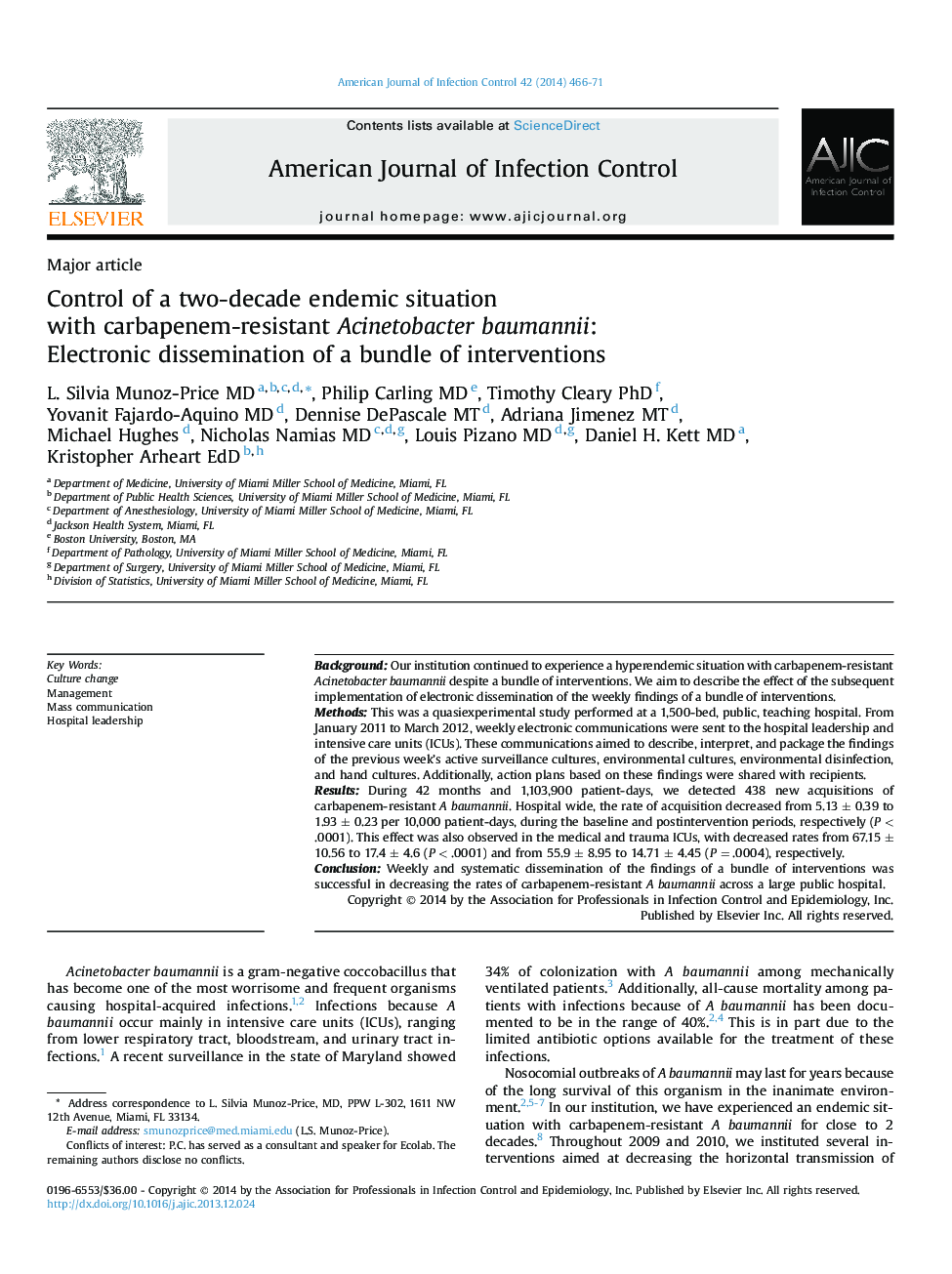| Article ID | Journal | Published Year | Pages | File Type |
|---|---|---|---|---|
| 5867574 | American Journal of Infection Control | 2014 | 6 Pages |
BackgroundOur institution continued to experience a hyperendemic situation with carbapenem-resistant Acinetobacter baumannii despite a bundle of interventions. We aim to describe the effect of the subsequent implementation of electronic dissemination of the weekly findings of a bundle of interventions.MethodsThis was a quasiexperimental study performed at a 1,500-bed, public, teaching hospital. From January 2011 to March 2012, weekly electronic communications were sent to the hospital leadership and intensive care units (ICUs). These communications aimed to describe, interpret, and package the findings of the previous week's active surveillance cultures, environmental cultures, environmental disinfection, and hand cultures. Additionally, action plans based on these findings were shared with recipients.ResultsDuring 42 months and 1,103,900 patient-days, we detected 438 new acquisitions of carbapenem-resistant A baumannii. Hospital wide, the rate of acquisition decreased from 5.13 ± 0.39 to 1.93 ± 0.23 per 10,000 patient-days, during the baseline and postintervention periods, respectively (P < .0001). This effect was also observed in the medical and trauma ICUs, with decreased rates from 67.15 ± 10.56 to 17.4 ± 4.6 (P < .0001) and from 55.9 ± 8.95 to 14.71 ± 4.45 (P = .0004), respectively.ConclusionWeekly and systematic dissemination of the findings of a bundle of interventions was successful in decreasing the rates of carbapenem-resistant A baumannii across a large public hospital.
